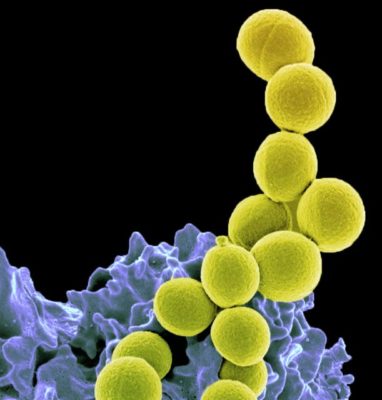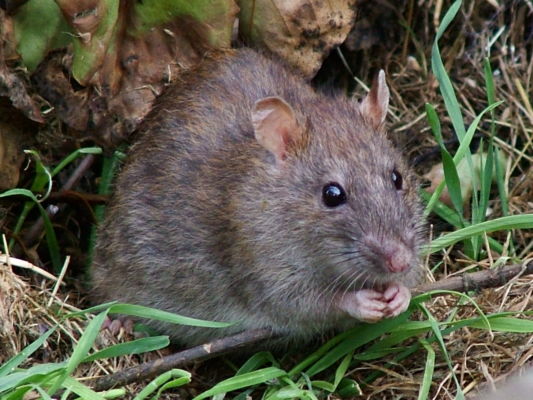In New Zealand we tend to focus on the harm rats do to our wildlife and ecosystems. But there’s another side to rats that’s even closer to home – their ability to carry diseases and parasites to people. From pig farms in Canada to the slums of Brazil, recent international research has been looking at the health risks that rats pose to modern-day humans.
In an article just published in the Canadian Journal of Veterinary Research, Jamie Rothenburger et al tested 21 Norway (brown) rats from Ontario pig farms to see whether they carried antibiotic-resistant strains of bacteria.

“Methicillin-resistant Staphylococcus aureus (MRSA) and Clostridium difficile are important human pathogens that are also carried by animals. The role of wild mammals on farms in their maintenance and transmission, however, is poorly understood.”
One rat (out of 21) was found to carry MRSA bacteria. Another from a different farm in the study, carried Clostridium difficile.
“The MRSA spa type t034 was isolated from 1 (4.8%) rat. This livestock-associated strain often colonizes pigs and pig farmers, suggesting that transmission among rats and pigs or environmental transmission is possible on pig farms. Clostridium difficile ribotype 078 was isolated from 1 rat from a different farm. This strain is associated with infection in piglets, calves, and humans. The identification of MRSA and C. difficile in Norway rats on farms in Canada adds to the growing knowledge about the role of rats in the ecology of these pathogens. Further studies are required to determine if rats play a part in the epidemiology of these pathogens on farms.”
Leptospirosis is a debilitating disease which can be transmitted from animals to humans through the urine of infected animals or through soil, water or food contaminated with their urine. Also called Weil’s disease, the symptoms in humans include fever, headache, bleeding, muscle pain, chills, red eyes and vomiting. Untreated, it can lead to kidney and liver damage and can be fatal. It can be treated successfully by antibiotics.
Leptospirosis can affect almost all mammals, and is one of the most common diseases transmitted from animals to humans. As New Zealand has only two native land mammals (both bats), Leptospira are thought to have come to New Zealand via imported farm animals and other introduced mammals such as rats, hedgehogs and possums

In the urban slums of Brazil, Norway rats are the primary reservoir of the leptospirosis. A. Minter et al looked at how the disease is spread within the rat population in an article published late last year in the journal Epidemiology and Infection. Their research showed that young rats may already be carrying the disease by the time they leave their mother’s nest.
“There is biological evidence for potentially three different transmission routes of leptospire infection occurring in the rodent population… We found that a significant proportion of animals leave the nest with infection and that the risk of infection increases throughout the lifetime of Norway rats. We did not observe a significant effect of sexual maturity on the risk of infection. In conclusion, our results suggest that vertical and environmental transmission of leptospirosis both occur in wild populations of Norway rats.”
Rats can also carry a number of parasites including fleas and internal worms. Again, the urban slums of Brazil proved a productive research base, this time looking at the helminth (‘worm’) parasites carried by Norway rats and their potential to infect humans. The research, by Ticiana Carvalho-Pereira et al is published in Parasitology.
“We aimed to identify risk factors associated with the probability and intensity of infection of helminths of the digestive tract in an urban slum population of Rattus norvegicus. Among 299 rats, eleven species/groups of helminths were identified, of which Strongyloides sp., Nippostrongylus brasiliensis and, the human pathogen, Angiostrongylus cantonensis were the most frequent (97, 41 and 39%, respectively).”

Researchers found what they describe as “a high global richness” of parasites in Norway rats, including 5 helminth species known to cause disease in humans.
“Among these, A. cantonensis was found in high prevalence and it was ubiquitous in the study area – knowledge which is of public health importance. A variety of environmental, demographic and body condition variables were associated with helminth species infection of rats, suggesting a comparable variety of risk factors for humans.”
The two research papers relating to Brazilian studies are freely available online. Only the abstract of the Canadian paper is freely available for those without institutional access.

